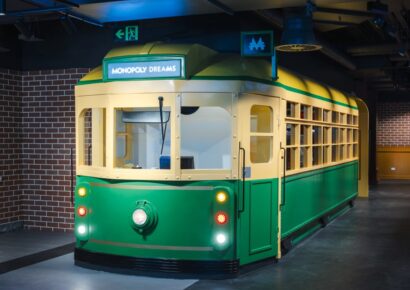The groundbreaking film The Lost City of Melbourne brings to light the beauty of Melbourne before its modernisation.
For many, Melbourne’s layout and buildings are considered to be some of the most impressive in Australia. However, what the film The Lost City of Melbourne suggests is that this modern city pales in comparison to how it looked before.
During the mid-1800s, Melbourne was the fastest-growing city in the world and during the height of the gold rush, the second richest city in the entire world after London. The demand for rapid industrialization and infrastructure was unprecedented. This meant that picturesque Victorian architectural buildings were built on a massive scale.
Keep up with the latest Melbourne film and television news here.
How Melbourne became (for a moment) the richest city in the world
The city’s origins can be traced back to 1835 when settlers led by John Batman established a colony on the banks of the Yarra River. Melbourne quickly grew into a bustling port town, driven by its strategic location for trade. The gold rushes of the 1850s marked a pivotal moment in Melbourne’s history, propelling it into the global economic spotlight. The discovery of gold in Victoria attracted a flood of prospectors, turning Melbourne into a boomtown virtually overnight.
The influx of wealth from gold mining transformed Melbourne’s economy, laying the foundation for its status as one of the world’s richest cities. The wealth generated during this period financed the development of infrastructure, including grand Victorian-era buildings, parks, and cultural institutions that still stand today. Melbourne’s population exploded, attracting people from all corners of the globe seeking their fortune in the goldfields.
As the gold rush waned, Melbourne adapted and diversified its economy. The city became an industrial hub, with manufacturing and trade playing significant roles. The wealth generated from these industries fueled further growth and development. The establishment of key financial institutions and the Stock Exchange in the late 19th century solidified Melbourne’s position as a financial powerhouse.
How Melbourne was lost
Like a time capsule, Melbourne remained a city that was full of heritage-listed structures until the 1950s. Director and producer Gus Berger explains that the newfound ideas of modernisation planned for the city were implemented before the 1956 Olympic Games came to Australia.
In 1950, Prime Minister Robert Menzies secured a one-hundred-million-dollar loan from the world bank for post-war expansion. With the combination of a jump-started economy and Melbourne hosting the world stage with the Olympics, the Victorian government felt it needed to re-invent Melbourne; hence came demolition from Whelan the Wrecker on a mass scale.
As much as the film is about the demise of the old city, it’s also a testament and servant to its integrity. It features rare photography and archival film that’s been restored to grace the big screen. The film’s self-stated aim is to “allow its audience to reimagine the former glory of the lost city of Melbourne.”
For times, please visit their website here.

